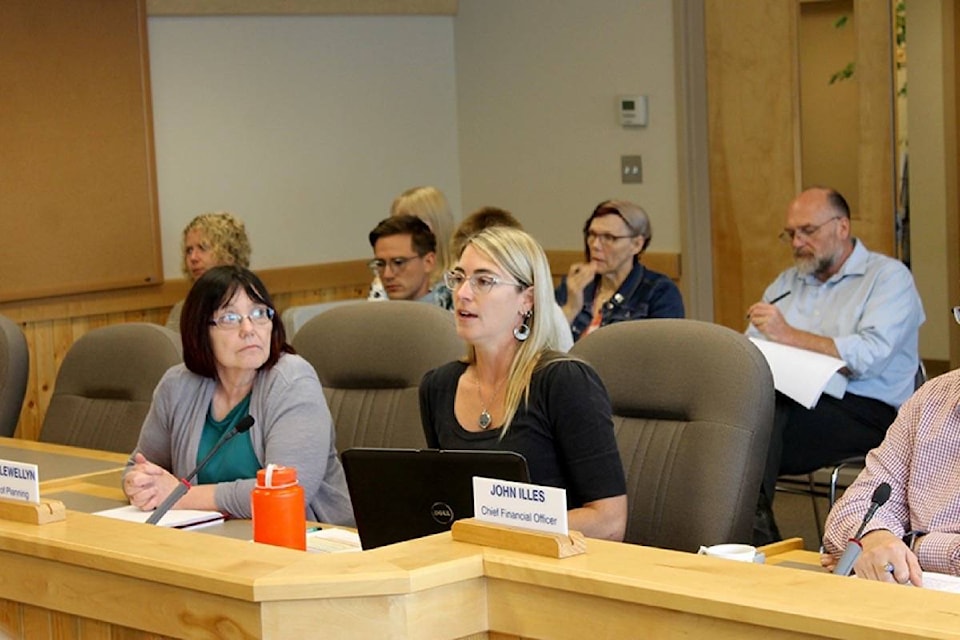A strategy helping farmers in the Bulkley-Nechako and Fraser-Fort George (BNFFG) regions face the challenges of climate change is complete and ready to move to the project stage.
Speaking to the board of directors of the Regional District of Bulkley-Nechako (RDBN) on Aug. 15, project coordinator Samantha Charlton explained how the Regional Climate Change Adaptation Strategy is equipping agricultural producers in the BNFFG regions with the tools to better handle a changing climate.
The strategy program can support projects that boost the resilience of producers, and $300,000 in funding from the provincial and federal governments is available for priority actions.
CAI has been holding workshops and vetting ideas for the projects in BNFFG for more than a year.
READ MORE: Projects to help farmers tackle climate change
It originally started in 2008 with the BC Agriculture Council, which represents major agricultural groups across the province, and then in 2010 the BC Agriculture Climate Change Action Plan - or Climate Action Initiative (CAI) - was born.
That plan examines how the agricultural sector can reduce greenhouse gas emissions and adapt to the risks of climate change.
“The resulting strategy begins with a really detailed current agricultural and regional context and looks at agriculture’s role in the economy,” Charlton told the board.
When looking at the strategy for BNFFG, the focus is on four main impact areas: increasing wildfire risk; increasing variability and crop suitability; warmer and drier summer conditions; and changing pest and beneficial insect populations.
Some ways of tackling the increasing wildfire risk are already familiar to Burns Lake residents, such as FireSmart programs.
READ MORE: Burns Lake gets FireSmart
But there’s also much risk posed by high amounts of fuel loading to nearby agricultural land and the strategy project aims to pilot collaborative fuel management, Charlton explained.
With the second impact area, there has been an “increased growing season length and increased number of growing to free days,” Charlton said. “That’s an opportunity that’s been flagged but there’s more uncertainty and increasing variability and concerns over precipitation and moisture. We looked at crop suitability modelling [under those conditions].”
Similarly, and with the third area of warmer conditions, the climate models that the strategy groups studied showed that drier summers with more extreme heat events were projected for the future.
“The first project we want to engage in and implement is to provide workshops and field days on existing water management tools and resources. We want to share what already exists, like information on irrigation systems, irrigation scheduling, farm design and crop selection for drought conditions.”
The final impact area, of changes to pests and beneficial insects (including pollinators) relates to rising year-round temperatures causing more species to survive the winter and their spread into previously unseen areas.
“The top action is to look at crop and pollinator relationships. Look at what’s happening to pollinators with climate change,” said Charlton.
That is one of the strategy’s 26 actions and calls for “consulting with producers and other experts to determine which crops and pollinators are of key interest [and] undertaking a multi-year study gathering relevant data from selected local sites,” according to the full report of the plan.
The goal of that action is to “support retention and development of pollinator habitat on and adjacent to farms, and in surrounding communities.”
Now that the strategy for BNFFG has been written up, and looking to the future, CAI hopes to partner with the regional district in implementing projects.
As an example of how future projects might look, Charlton pointed to the collaboration between CAI and the Region of Delta. Since 2013 the partnership has resulted in several projects addressing flood risks, river salinity and agricultural water supply, among others.
Delta committed $15,000 - $5,000 per year over three years - towards the projects.
In terms of future collaboration with BNFFG, discussions will be held in late September between the RDBN and CAI.
“We are waiting for potential projects moving forward to be defined in much more detail before any action is taken,” as Debbie Evans, Agriculture Coordinator with the RDBN told Black Press.
There are more than 330,000 hecatres of farmland in the Bulkley-Nechako, Stikine and Fraser-Fort George regions as of 2016, according to CAI, and over 2,600 work in agriculture.
